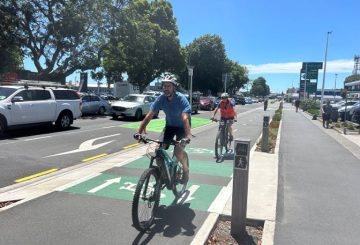뉴질랜드 보건부 (Health NZ) 는 퀸스타운의 윈터 프라이드 페스티벌과 관련이 있을 가능성이 있는 새로운 mpox 사례를 보고했습니다.이 사례는 2022년 6월에 백두가 보고될 수 있게 된 이후 뉴질랜드에서 총 54건으로 늘어났습니다.2024년에 지금까지 5건의 확인 사례가 발생했습니다.
국립 공중보건국의 수잔 잭 박사는 추가 조사를 진행 중이라고 밝혔습니다.최근 사례를 포함한 몇몇 페스티벌 참석자들은 나중에 해외에서 mpox 양성 반응을 보인 사람들과 접촉했습니다.
잭 박사는 더 많은 사례가 발생할 수 있지만, 만두가 드물고 뉴질랜드에서 광범위하게 발병할 가능성은 낮다고 강조했습니다.자신이 수두에 노출되었다고 생각하거나 증상, 특히 발진이 있는 사람은 의사를 방문해야 합니다.mpox 바이러스는 성행위를 포함한 밀접 접촉을 통해 전염되므로 증상이 있는 사람은 성적 접촉을 피하고 도움을 요청해야 합니다.
목두의 증상으로는 발진이나 피부 병변이 있습니다.이러한 병변은 주로 얼굴, 손, 발, 입, 목, 생식기 및 항문에 반점, 융기, 물집 또는 궤양으로 나타날 수 있습니다.병변은 납작한 상태에서 솟아오른 상태로 진행되며, 액체로 채워지고, 껍질이 벗겨지다가 결국에는 사라집니다.아프고 가려울 수 있으며 치유되는 데 몇 주가 걸릴 수 있습니다.어떤 사람들은 처음에 독감과 비슷한 증상을 보일 수도 있습니다.
믹스에는 클레이드 I과 클레이드 II의 두 가지 유형이 있습니다.두 가지 유형 모두 아프리카에서 발병을 일으켰으며, 최근에는 뉴질랜드나 인근 국가에서는 발견되지 않은 계통군 I이 증가하고 있습니다.목두에 대한 자세한 내용은 관련 보건 자료를 참조하십시오.




























































